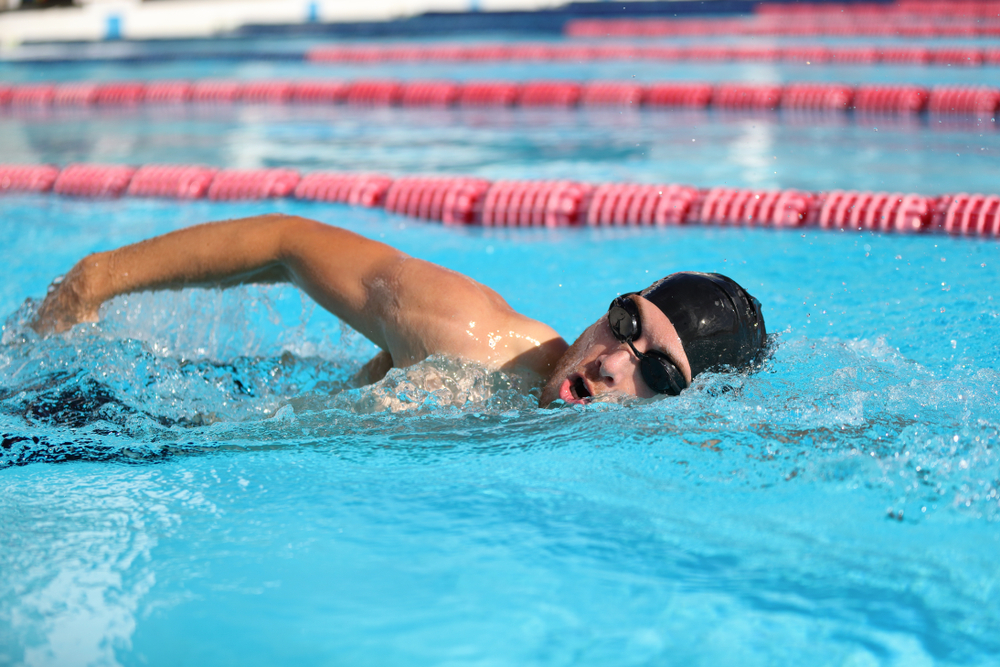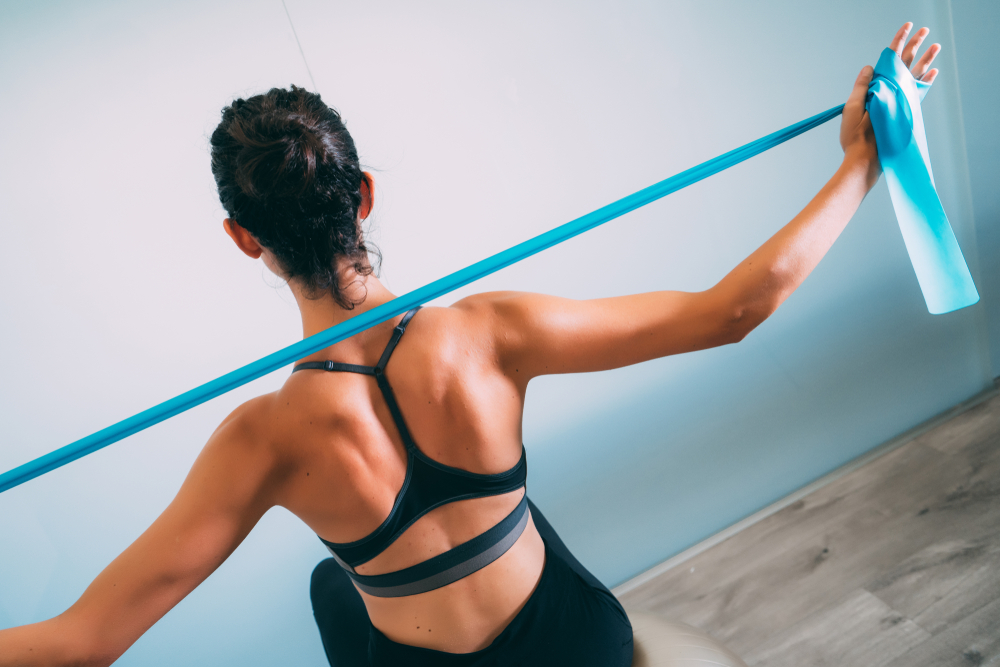Physiotherapy for Swimmers


What are the most common swimming injuries?
• Swimmer’s shoulder (subacromial pain syndrome): Is an umbrella term for a number of overuse injuries that can occur around the shoulder joint, including irritations of the rotator cuff tendons and inflammation of the subacromial bursa (a small fluid filled sac that provides lubrication for the tendons).
• Neck pain: Pain in the neck is common in swimmers, due to the repetitive rotation required for breathing while the upper body is rotating to propel the body forward. Neck pain can be due to joint or muscular irritation and appears to be more common in swimmers who unilaterally breathe (breathe repeatedly to one side).
• Biceps tendinopathy: Also called biceps tendonitis, this is an irritation at the front of the shoulder where one of our biceps tendons crosses in front of the shoulder joint. It is commonly associated with subacromial pain syndrome.
• Back pain: Often associated with the dolphin kick and in some people the freestyle kick, this can occur as the back arches through full range of motion. This condition is usually associated with a back irritation out of the pool, such as from sitting all day at work and can be due to inadequate trunk muscle strength or spinal range of motion.
• Breaststroker’s knee: This refers to an irritation of the ligament on the inside of our knee (medial collateral ligament), due to repetitive strain during the breaststroke kick. Initially this can be painful only during the breaststroke kick but can progress to being painful during the freestyle kick or even during everyday activities out of the pool.
How do you treat swimming injuries?
Each swimming injury is unique and each swimmer has different reasons why they sustained the injury. In general, for swimmers, there are several key aspects that need to be addressed when assessing and treating an injury. These include:
• Joint mobility: Inadequate range of motion is a common reason for injury in swimmers. Movements such as shoulder internal rotation and thoracic extension allow the shoulder to be placed in the correct position during the catch phase of swimming. Inadequate range in these or other movements can place excessive strain on the muscles and/or tendons of the shoulder leading to injury.
• Muscle strength: During the swim stroke, the upper body and trunk muscles need strength to control the arm’s position in the water while adequately controlling the stability of key joints like the shoulder. Deficits in strength of key muscle groups such as the rotator cuff, can lead to excessive strain on tissues such as the tendons that cross over these joints.
• Biomechanics and technique: Assessing the swimmer’s biomechanics is important to understand if there are any factors that are placing excessive stress on the injured body part. This can be done with simulated tests within the clinic to check for any abnormality in the way the body is moving to control the shoulder and propel the body forwards.
• Training programming error: Increasing swimming distance or intensity too soon can lead to injury, as the body does not have enough time to develop and adapt to the increase in stress. Careful planning of your training is important to allow your body to recover from an injury while still maintaining swimming speed and fitness.


How can you prevent swimming injuries?
Prevention is always better than cure, and most swimming injuries are preventable. Addressing the factors below can significantly reduce your risk of swimming injuries:
• Strength and conditioning: Performing resistance training twice per week has been shown in many studies to have a large effect on reducing risk of injury. Resistance training should include all the major muscle groups that are important to swimming, such as the rotator cuff, scapular stabilisers, deltoids, latissimus dorsi and teres, biceps and trunk muscles.
• Improve and maintain mobility: Include some basic mobility exercises into your weekly training routine with a focus on movements such as shoulder flexion, thoracic extension and shoulder internal rotation. Speak to a physiotherapist to find out specific exercises that will work for your body.
• Address incorrect biomechanics: Have a physiotherapist assess how your shoulder moves and responds to resistance to check for any biomechanical errors that may be placing excessive strain on one or more body parts. This works best when addressed together with a strength and conditioning program to ensure that your muscles have the required strength and endurance.
• Plan your training carefully: Ensure you swim consistently throughout your season but avoid any sharp jumps in distance or intensity. Make gradual changes to ensure your body has time to adapt to any increases in training load. Remember to also start your strength and conditioning at the beginning of the season to help prevent injury.
If you are ready to make an appointment, visit our make a booking page and get started today.
Get Active!
For more, visit our Frequently Asked Questions page.
If you would like to ask a question about our services or anything else, visit our Contact Us page to get in touch.
If you are ready to make an appointment, visit our make a booking page and let us help you with your fitness or recovery.

